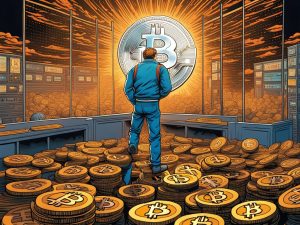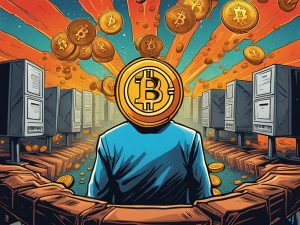Concerns Over the Current State of Web3 and the Crypto Space
In a recent update shared on social media platform X, Ki Young Ju, the founder of CryptoQuant, expressed significant worries regarding the condition of Web3 and the broader cryptocurrency landscape—excluding Bitcoin. He underscored that while Bitcoin remains stable, the wider crypto ecosystem is experiencing turmoil due to its inability to spark the same excitement once prevalent in the sector. Ju compared the early days of cryptocurrency to a game that elicited joy through competition, challenges, and social interactions. In the past, he noted, the crypto environment offered two primary sources of excitement: the unpredictability of financial profits and the thrill of innovating with new technologies.
Changing Dynamics in Trader and Builder Engagement
Ju articulated that these two types of activities attracted diverse participants in the crypto realm—traders and builders. He observed that traders, particularly those aiming for quick financial returns, found exhilarating involvement in the market’s volatility. Conversely, builders enjoyed the process of developing new technologies and venturing into unexplored areas within blockchain. Over time, however, both groups have evolved significantly. According to Ju, early on, many investors were attracted by Bitcoin’s underlying philosophy, while six years ago, futures trading began to dominate the market. He stated that today, more cautious investors are paving the way in the industry.
The Shift in Builder Composition and Mentality
When discussing builders, Ju depicted the initial crypto innovators as cypherpunk cryptographers, whose successors ultimately thrived during the trading boom six years prior. He highlighted an influx of individuals from various sectors, such as finance and gaming, into the blockchain arena. However, these newcomers seem to struggle integrating with the “game-oriented” mentality that characterized traditional crypto traders. Ju pointed out that the innovations offered by these new builders have lost the capacity to deliver the same level of excitement to traders, resulting in a growing disconnect between the two factions.
The Disappearing Synergy Between Traders and Builders
Ju cautioned that this disconnect has led to the erosion of the synergy that once existed between traders and builders. In his perspective, early builders frequently inspired enthusiasm among traders, but as time progressed, many of these original innovators left the scene, thwarted by financial regulations, legal issues, or the lure of financial comfort. Consequently, according to Ju, the crypto sector is increasingly resembling a gambling establishment. He noted that the remaining builders are primarily producing either “gambling products,” such as meme coins, or traditional financial products that fail to capture traders’ interest.
Implications of the Crypto Industry’s Current Crisis
Ju continued by stating that the industry’s inability to rekindle excitement for both traders and builders is the source of its current predicament. He stressed that without new avenues to engage traders, stagnation will be inevitable. Ju highlighted the underwhelming performance of altcoins in 2024 as evidence of this crisis. He concluded with genuine apprehension for the industry’s prospects, positing that unless new opportunities arise to rekindle engagement with traders, the cryptocurrency market faces a period of extended stagnation.
Hot Take: Navigating the Future of Crypto 🌐
As you contemplate the future of the cryptocurrency sector, it’s vital to consider the shifting roles and relationships among its main participants. The dynamics between traders and builders are essential for fostering innovation and excitement in the market. This year, a revival may hinge on striking a balance that allows both groups to thrive, creating a stimulating environment capable of generating renewed interest. Adapting to these changes could be crucial for revitalizing the crypto community and ensuring its longevity as a space for exploration, creation, and investment.





 By
By
 By
By


 By
By
 By
By